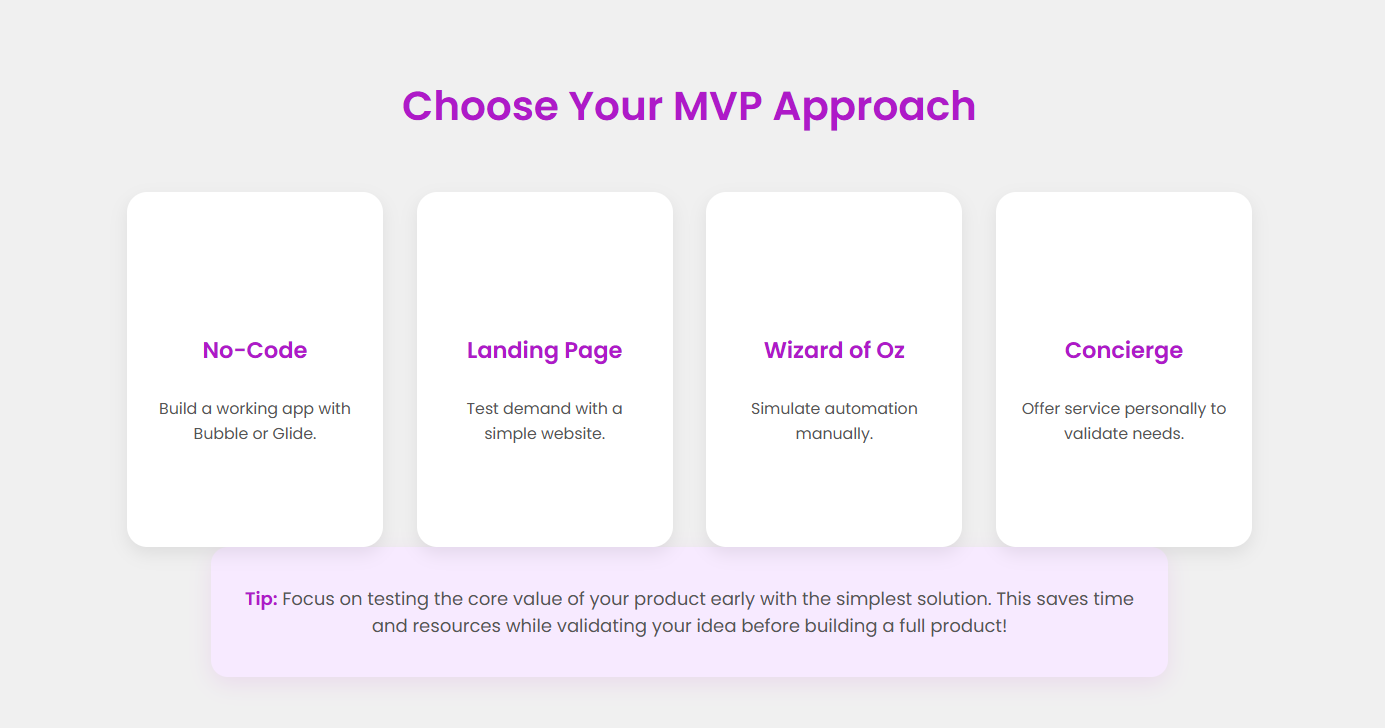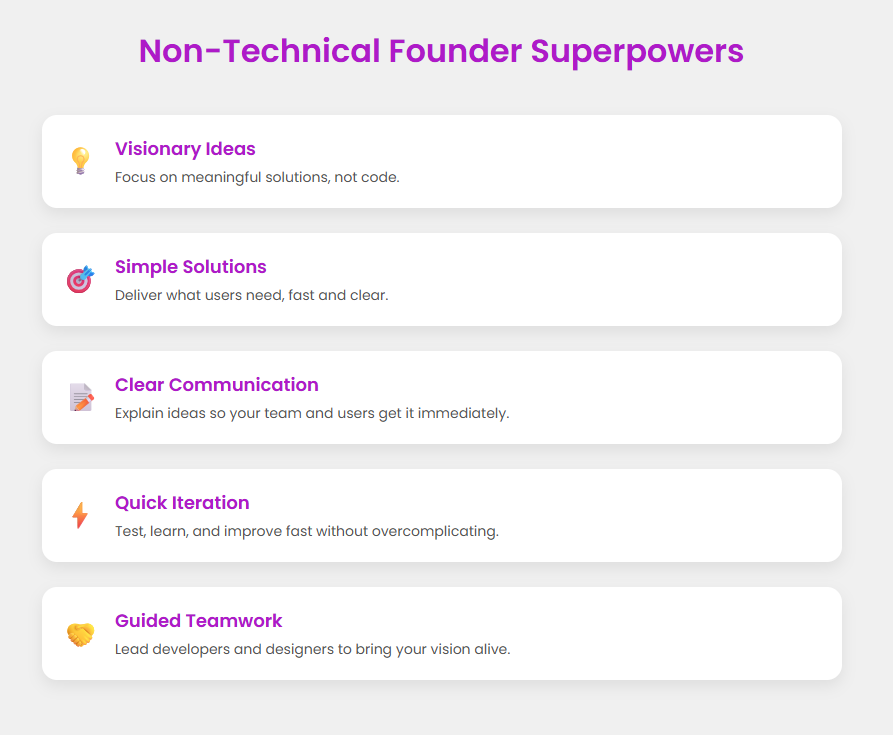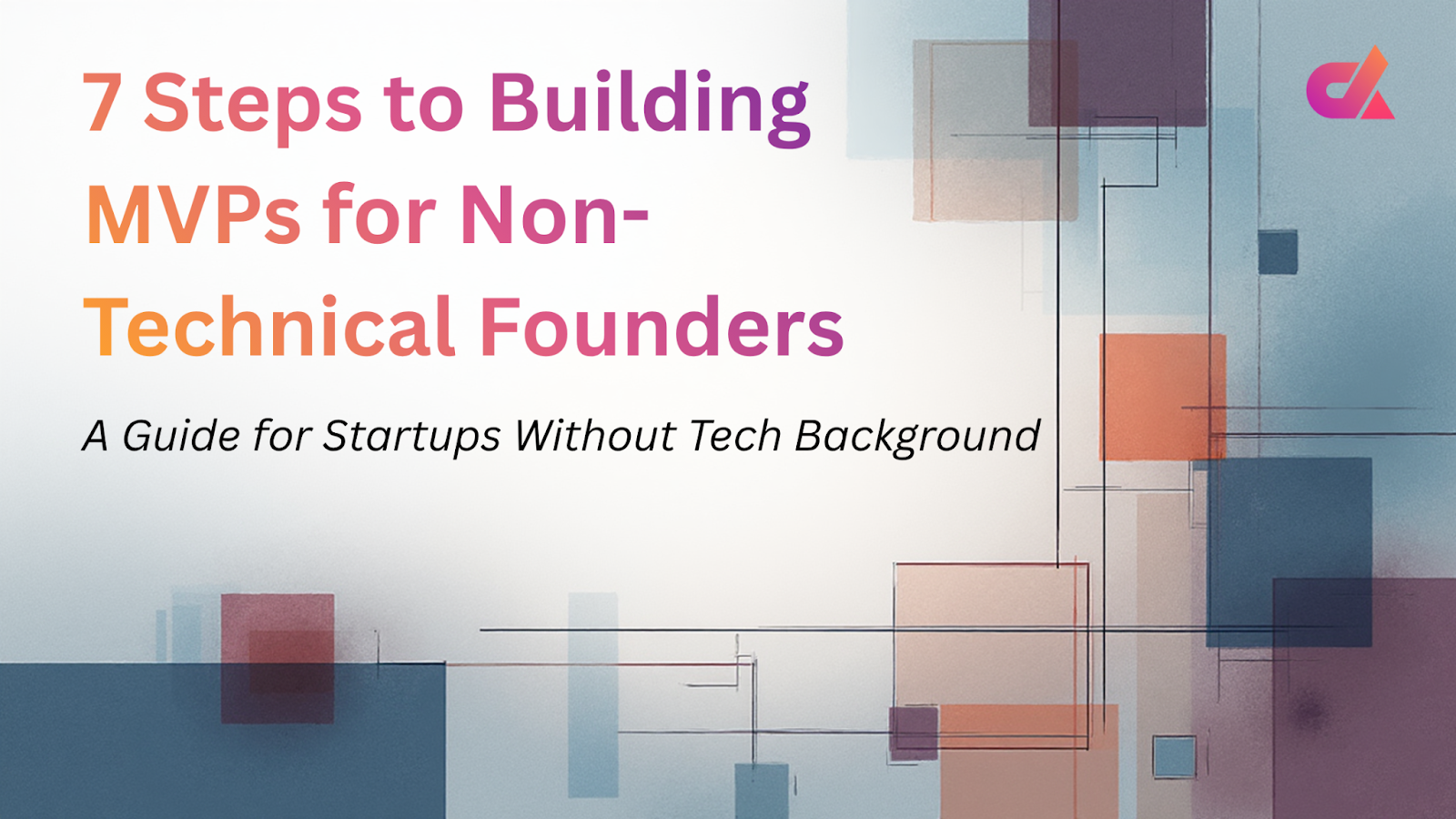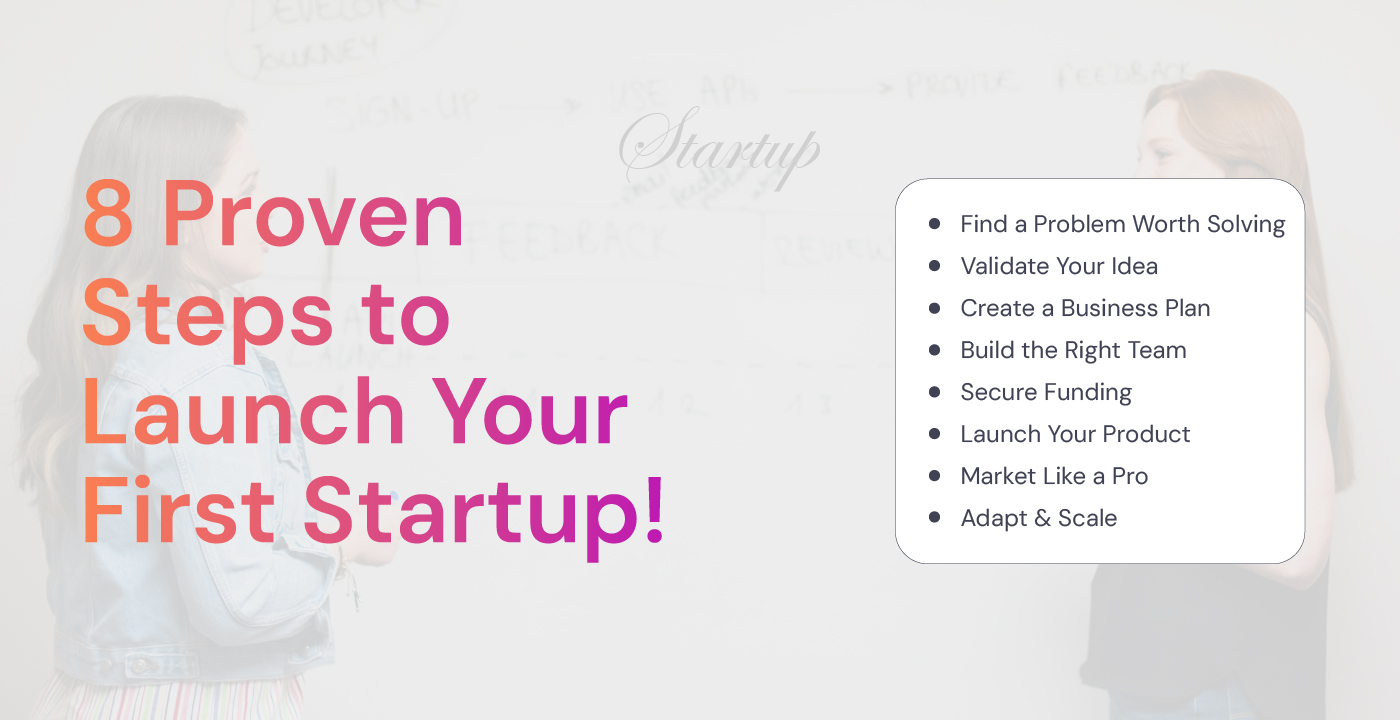You have an idea that won’t leave your mind. Maybe it’s an app, a platform, or a service that could make life easier for a group of people. You can see the screens, the features, maybe even the logo. But, you are not a coder. You don’t know how to build the app. You don’t even know where to start. And that’s why an MVP for non-technical founders seems like a huge obstacle.
Most first-time founders without a technical background face this challenge. But you can launch a startup without a tech background.
You just need the right approach, and it starts with building a minimum viable product, or an MVP.
An MVP is the first working version of your idea. For non-technical founders, it is the safest, fastest, and smartest way to move from idea to reality.
This MVP guide for non-tech founders will walk you through building an MVP even if you can’t write a line of code.
Why Is an MVP for Non-Technical Founders the Best Thing?
An MVP is the first working version of your idea. It proves your idea can work, gives you feedback from real users, and shows whether there’s demand. MVP is a test version of your product. It doesn’t have every feature. It doesn’t need to be polished. Its purpose is simple: solve one problem well and see if people actually care.
Starting small has a huge advantage for a startup without tech background.
You avoid spending months or thousands of dollars on features users don’t want.
You get early insights about what works, what doesn’t, and what your next steps should be.
Some of the most famous startups began this way. Dropbox started with a simple demo video to gauge interest before writing code.
Zappos began with photos of shoes in local stores, just to see if people would buy online. The lesson is clear: validate before you build.
Building an MVP for non-technical founders is a roadmap and a safety net.
Step 1: Understand the Problem, Not the Product
The most common mistake non-technical founders make is jumping straight into features. They think of apps, dashboards, notifications, algorithms, and forget the most important thing: the user’s pain.
Ask yourself:
Who is experiencing this problem? How often? Why does it matter to them?
Be careful: An analysis by Precode shows that 87% of MVPs fail to validate properly, because of bad assumptions, slow launch, or lack of real user testing. That means a huge number of MVPs don’t achieve their validation goals if you don’t test fast and learn quickly.
One founder wanted to create a complex meal-planning app. She imagined features for calorie counting, custom recipes, premium plans. After talking to ten busy parents, she realized that nobody wanted complexity; they just wanted suggestions for dinner. Her MVP became a simple WhatsApp bot that sent three meal ideas each day.
That’s it. It worked.
Start with pain, not pride. Focus on what people need, not on what you want to build.
Step 2: Identify the Must-Have Features
Once you understand the problem, it’s tempting to try to solve everything at once. Don’t! Your MVP is about proving your concept, not building your dream product.
Pick two or three features that address the core problem and nothing else. This is a key part of choosing the right MVP feature set.
For example, if you are building a platform for freelancers, your full product might include chat, payments, reviews, portfolios, and matching algorithms. The MVP only needs a clean workflow: connect client, connect freelancer, make a simple payment. That’s enough to validate your idea.
Feature selection is strategic, not minimalistic. Focus on:
- Core problem solver: the feature that delivers the main value.
- User flow feature: the feature that lets people complete the main task.
- Feedback loop: a way to collect input from early users.
Less is not lazy. Less is smart.
Step 3: Prototype Fast Without Coding
You don’t need to hire developers or write code immediately. Start by prototyping your idea.
The goal is to validate the flow and usability before building anything expensive.
Buildin7 reports that in a well-structured validation process, startups can reduce development costs by 67% and reach market-fit 4.2x faster.
That means when you validate before building, you can cut development costs by more than half and move to market much faster.
Tools like Bolt, Figma, Miro, or Adobe XD allow you to create clickable mockups. Users can explore, click, and react, without a single line of code.
One founder created a prototype for a pet social app. Within a week, 25 users tested it. They loved the “profile for pets” feature, but found it unnecessary. This feedback saved her three months of coding and thousands of dollars.
Prototyping is a risk-free way to learn what users want and what they don’t.
Step 4: Choose Your MVP Approach
Today, there are several ways to build an MVP for a startup without tech background. Pick one that fits your idea, budget, and timeline.
No-Code MVP
Use tools like Bubble, Glide, Webflow, or Softr to build a fully functional app. It looks and works like a real app, but without writing code.
Landing Page MVP
Build a simple website that explains your product and includes a “Join the Waitlist” or “Get Early Access” button. If people sign up, you’ve validated demand.
Wizard of Oz MVP
The app looks automated, but you handle the work manually behind the scenes. For example, if you’re testing an AI resume-builder, you could manually improve uploaded resumes before sending them back.
Concierge MVP
Provide the service personally before building an app. For instance, a nutrition coach could text meal advice to a few users daily to understand their needs before coding anything.
The core idea: deliver value to users first, without overcomplicating development.

Step 5: Outsourcing MVP Wisely
Outsourcing MVP can be intimidating for non-technical founders. Start small by outsourcing one feature first” sounds safe. But in reality, it often fails.
Because if you can’t evaluate code quality, architecture, security, or system scalability, then you can’t reliably judge whether that first feature was built well.
And by the time you notice the problems, it’s too late.
Instead, a better strategy is:
Work with an AI-fast development partner who shows you how they’d build your full MVP upfront.
A strong AI-fast development partner will:
- Explain the full product architecture upfront. Tech stack, system design, database, integrations, and what’s MVP vs later.
- Show live AI-powered prototypes by turning requirements into screens, validating flows, and generating drafts in real time.
- Provide a complete MVP plan before coding. Core features, user journeys, wireframes, timelines, and clear definitions of “done.”
- Offer transparent build tracking. Weekly snapshots, demo videos, auto-documentation, and clear next steps.
- Let you own the product vision. You set priorities and UX; they execute with speed.
Step 6: Launch, Measure, Iterate
After building the MVP, the work isn’t over. Now it’s about learning.
Track metrics like:
- Sign-ups versus active users
- Feature usage
- Drop-off points in the user flow
- Feedback from users (plus, learn from failed startups to avoid mistakes)
One founder launched a home-cleaning app and found users loved it, but nobody booked a cleaning. Actually, the “confirm booking” button was buried. A simple change doubled bookings.
Your MVP is a living experiment. Learn fast, adjust, and iterate before scaling.
Step 7: Knowing When to Scale
You will know it’s time for version 2 when:
- Users return consistently
- People are willing to pay for your solution
- The problem feels urgent to solve
At that point, you can invest in a full product with confidence, because you know your MVP has validated the demand.
Why Being Non-Technical Can Be Your Biggest Strength?
You might think: “I can’t code, I can’t build an app, I am at a disadvantage.” Actually, being non-technical can be a huge advantage.
1. You Focus on the User, Not Just the Tech
Technical founders often get excited about features and code. Non-technical founders naturally focus on people: customers.
You think: “What problem are we solving? How can this make life easier for them?”
This mindset helps you build products people actually want, instead of just building cool tech that no one uses.
2. You Keep Things Simple
When you don’t know all the technical tricks, you naturally look for simpler solutions. This can be amazing for an MVP. Simple products are easy to use, fast to test, and cheaper to make.
Remember: users love simple, clear, and useful products, not complicated apps with too many features.
3. You Communicate Clearly
As a non-technical founder, you have to explain your ideas in plain language, no coding jargon. This clarity helps your team, your users, and even investors understand your vision.
Good communication means fewer misunderstandings, faster development, and a product that actually solves the right problem.
4. You Avoid Over-Engineering
Tech founders sometimes add features because “we can do it”. Non-technical founders focus on “what’s really needed”. This saves time, money, and frustration.
Your MVP can stay lean and fast-moving, just enough to test your idea and learn what works.
5. You Can Outsource Tech Skills
Not knowing code doesn’t stop you. You can hire developers, designers, or use no-code tools to build your MVP.
What you cannot outsource is: understanding your users, making smart decisions, and defining the vision.
You guide the team, set priorities, and keep the product focused on solving real problems.

Final Note!
Building an MVP as a non-technical founder is not just possible, it’s often smarter. You avoid unnecessary costs, focus on the user, and validate your idea before investing heavily.
Your role is to lead the vision, understand the problem, and make strategic decisions. Your MVP proves whether your idea is worth pursuing.
Start small, test quickly, and grow wisely.
We have worked with hundreds of founders across different industries and helped them turn ideas into real, validated products, even without a technical background.
From defining the core problem to selecting the right MVP approach and guiding you through development, we provide hands-on support.
The most important thing to remember: every great startup started with a simple step. Your MVP is that step.
And with the right guidance, it can be the beginning of something truly impactful.









